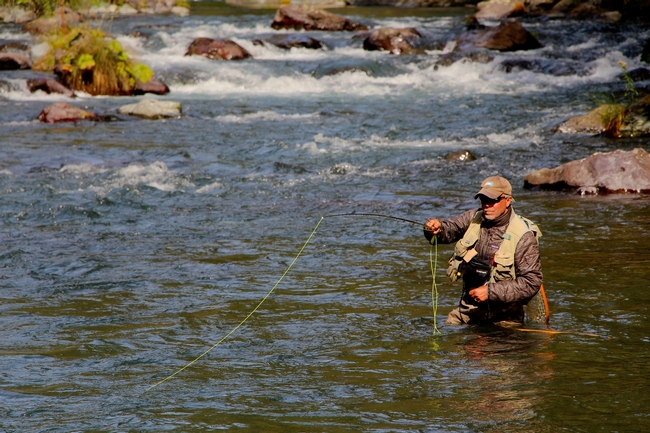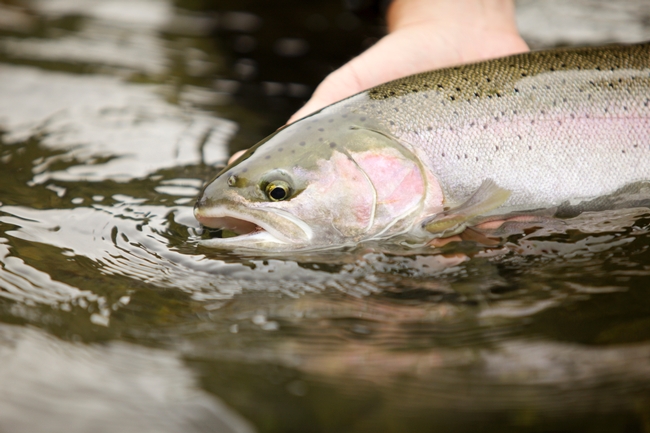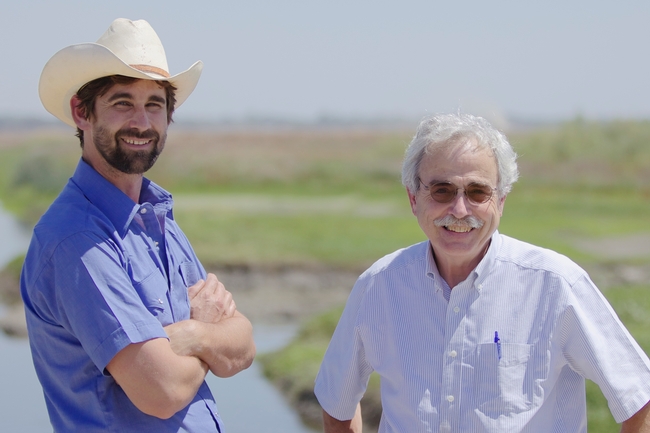Posts Tagged: cold
Ever Seen a Mantidfly?
Ever seen a mantidfly, also called a mantisfly? Bohart Museum of Entomology associate John De Benedictis, aka "Moth Man," brought a mantidfly,...
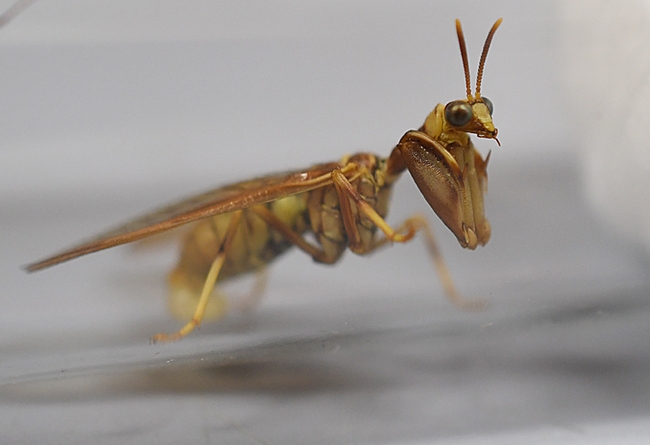
Mantidflies use their front legs to catch small insect prey. This one was collected by John De Benedictis at the UC Davis Stebbens Cold Canyon Reserve. (Snapshot by Kathy Keatley Garvey)
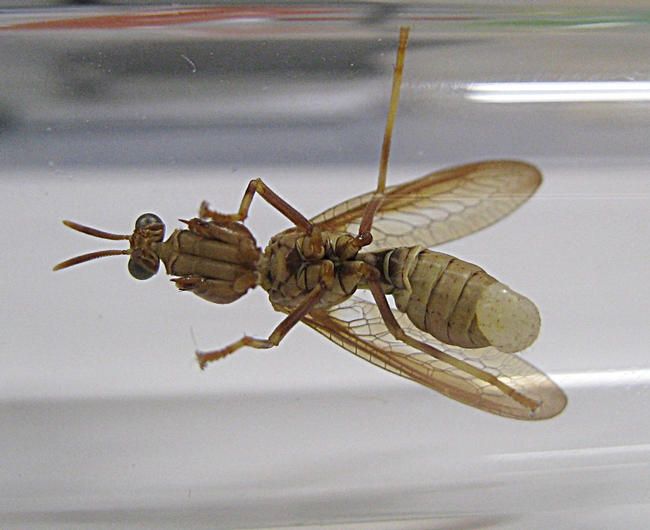
In coloring, the mantidfly abdomen resembles a paper wasp. (Photo by Kathy Keatley Garvey)
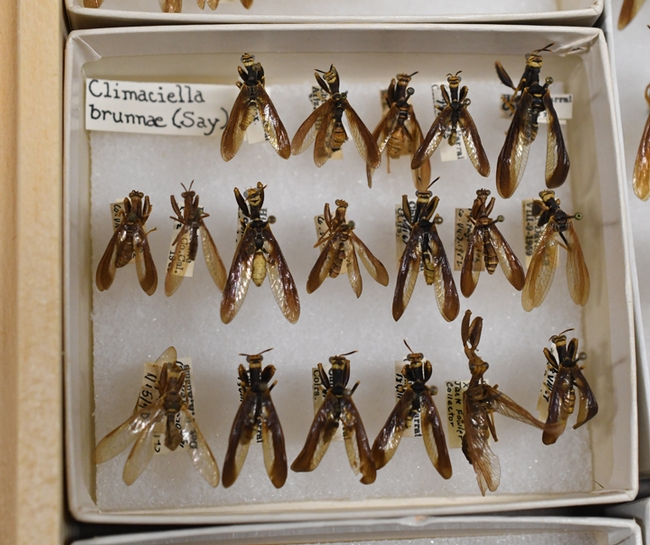
Part of the collection of mantidflies, Climaciella brunnea, at the Bohart Museum of Entomology. (Photo by Kathy Keatley Garvey)
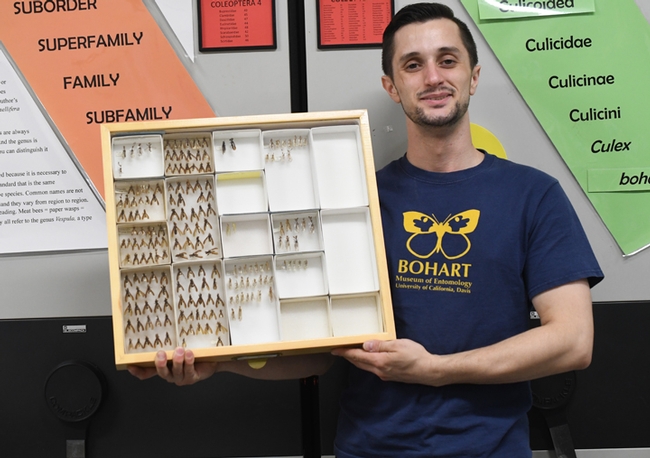
Bohart Museum of Entomology associate Wade Spencer holds a drawer of mantidfly specimens. The museum houses some eight million specimens, collected globally. (Photo by Kathy Keatley Garvey)
How Cold Is It? Ask Siri and Check for Bees
Have you ever asked Siri "How cold is it?" Siri, a computer program known as Apple's "intelligent personal assistant" or "knowledge navigator," is...
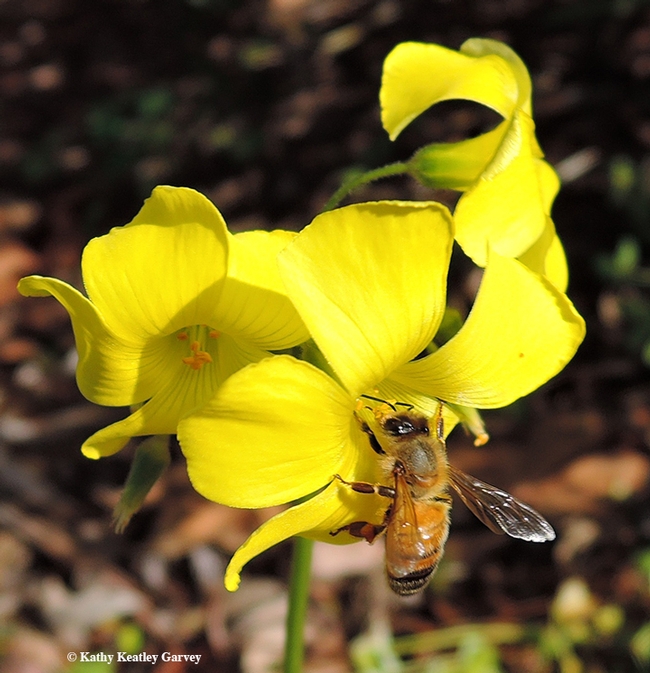
A honey bee foraging on oxalis at noon on Wednesday, Jan. 25 in Vacaville, Calif. Temperature: 53 degrees. (Photo by Kathy Keatley Garvey)
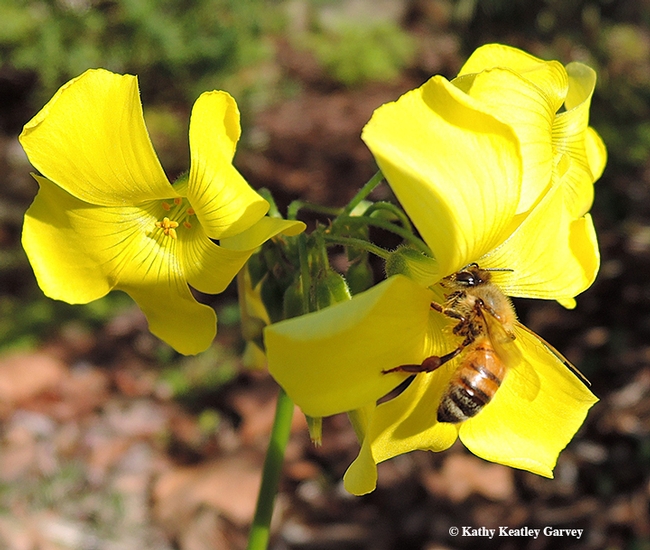
Pollen-packing honey bee on oxalis. (Photo by Kathy Keatley Garvey)
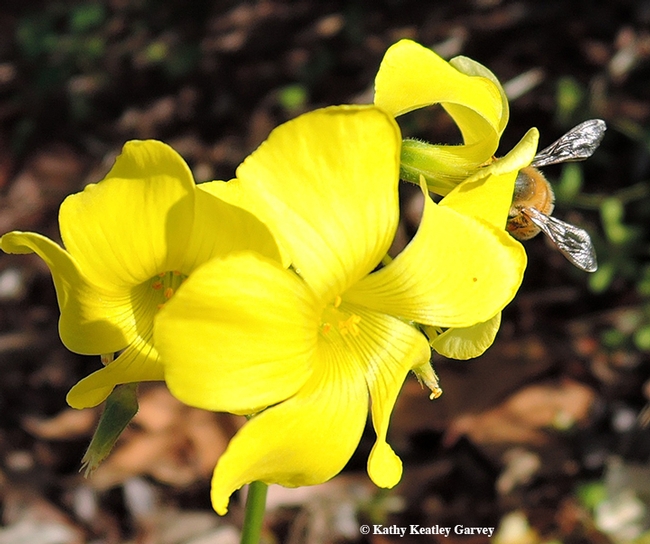
There she is! Silvery wings and all. (Photo by Kathy Keatley Garvey)
Conservation organization California Trout helps establish endowed chair at UC Davis
California once teemed with millions of native salmon, trout and steelhead. The state has 31 distinct types of these iconic, majestic fish. But decades of degradation to aquatic habitat has depleted their numbers in many areas of the state. According to a report by UC Davis fisheries professor Peter Moyle and colleagues, 20 of these fish species are in danger of extinction within the next century. They are important species not just for the recreational or commercial benefits they afford, but also because they are a direct reflection of the health of the environment.
“Large self-sustaining populations of native salmon and trout are found where streams are in reasonably good condition,” Moyle wrote in his 2008 report, “SOS: California's Native Fish Crisis.” This report was commissioned by the conservation organization California Trout (CalTrout), which exists to support conservation science, education, and advocacy efforts to protect California's water resources and fisheries.
Moyle, whose academic home is the Department of Wildlife, Fish and Conservation Biology at UC Davis, is no stranger to CalTrout. He is the foremost authority on California's native freshwater and anadromous (sea-run) fishes and has been a leader in research and conservation efforts. His research has provided the core science essential to statewide conservation planning for freshwater and estuarine native fishes, especially salmon and trout. Graduate students who studied with Moyle now occupy many top-level fish ecologist and management positions in state and federal agencies, as well as key nonprofits like CalTrout.
In May of this year CalTrout and UC Davis announced the formal creation of the Peter B. Moyle and California Trout Endowed Chair in Cold Water Fishes. The endowment will provide crucial support for the chair holder's scholarly activities, teaching, and public service involving cold water fish and aquatic ecosystems. He or she will teach department courses, mentor graduate students, conduct research and outreach, and provide leadership in the conservation of cold water fishes and their ecosystems. The university recognizes that salmon, trout, and steelhead are the major drivers of many conservation efforts and will have the highest priority in the chair's program.
Most of the contributors to the endowment are CalTrout board members such as Nick Graves. He and his wife, Mary, explored many trails and trout waters in the Sierra Nevada over the years and have enjoyed larger rivers flowing from the Trinity Alps, Mt. Shasta, and the Siskiyou Mountains. “The opportunity to create a scientific chair whose research targets California waters, in perpetuity, is a comforting thought,” Graves said.
“I have worked with the organization since its earliest days and have always admired the dedication of its members to aquatic conservation,” Moyle said. “I am biased, of course, but I think CalTrout has made a very smart investment in the future by creating an endowed chair.”
Cold Weather Ahead
In a couple of days, we will be moving back to Sonoma County, so this will be my final blog for the Solano Program. We will miss being in this nearly frost-free climate of zone 17, but we are happy to be back in a forested rural area. Our home in Occidental is in Sunset’s zone 15, where winter temperatures can dip into the upper 20’s during a cold snap. The New Sunset Western Garden Book shows a detailed climate zone map of the entire Bay Area (pages 32,33), including the inland Delta areas. Aside from the milder zone 17, Solano County includes a big chunk of zone 15, 14, and 9, which is near Vacaville.
Companion Planting
One way to beat the frost is to plant the most sensitive plants, like Lantana (Lantana camera) with some other more frost hardy plant, like California lilac (Ceonothus spp.) (see photo), seen cascading over a retaining wall in my neighborhood. The evergreen foliage protects most of the sensitive parts of the Lantana as an unexpected symbiosis.
Bougies to Go
For those of you like me who can’t stand to go without a Bougainvillea (Bougainvillea spectabilis), my solution to zone 15 living is to pot them, which makes them portable and easily placed in a protected place during a frost alert. (see photos)
Break out the Frost Covers
And yes, I’ve found that you can have avocados (Persea americana) in zone 15. But you do have to keep the frost covers handy during the coldest months. We have two at our Occidental condo, and I got the hardiest ones I could find: ‘Mexicola’, which is very cold hardy to 20 degrees F. The Meyer lemon (Citrus x meyeri) is also a favorite of mine. It’s best to get early ripening varieties in frost prone areas, because fruit is damaged at several degrees below freezing. However, frost covers can raise the temperature by 6 degrees, which often is just enough to protect the fruit.
Late Blooming Apricots
I had given up on trying to grow apricots (Prunus armeniaca) in zone 15, but recently I found two late blooming varieties: ‘Harcot’, and ‘Harglow’. The latter is also disease resistant. So, I’ll be putting one or two dwarfs in, in another month or two.
Enjoy this beautiful fall weather.
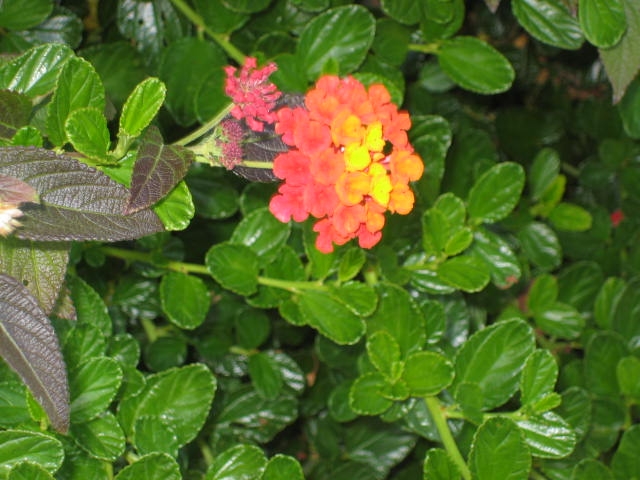
Lantana protected by Ceanothus. (photos by Bud Veliquette)
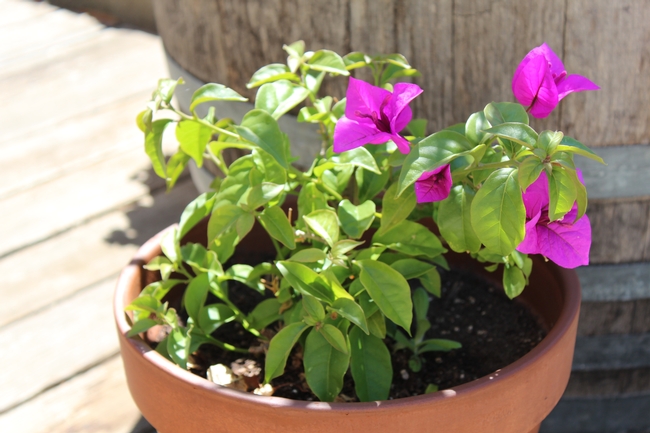
Bougainvillea beauty in a pot.
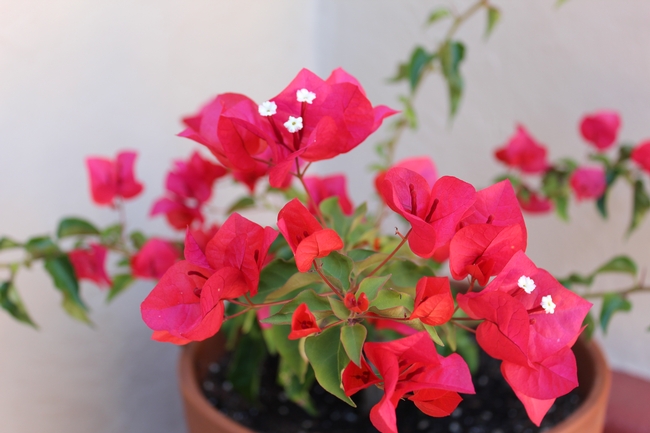
Another bougie!

Citrus in a raised bed surrounded by Zinnia.
Garden Confusion
My poor garden is so confused! It is November, correct? I was outside, in shorts and sandals, watering my thirsty plants in the heat this week. So many of the trees have not turned color and started to drop leaves yet. I'm usually doing some pretty heavy raking of leaves by now. I'm wondering if and when fall will arrive here in California.
In spite of the unusual weather, I did do some random fall chores outside. I went ahead and took out the tomato plants, picked the pumpkins and discarded the vines in anticipation of the possible upcoming frost next weekend. The morning glories have continued to bloom every day, although not as profusely. Even so, I pulled down the vines and tossed them in the compost bin. Various perennials were in need of deadheading, so I took care of that. What leaves are falling were raked up, as I don't want to encourage the various fungus and bugs that love their habitat to take over (I have enough trouble keeping rust and black spot at bay as it is on my roses!). I mowed the grass, hoping that if we do have a frost, it'll be the last time I have to mow until springtime.
Turning to my patio, the outdoor furniture is now all under cover from the rains. The summer annuals in the pots were still looking pretty, but I'm ready for winter annuals. So…I pulled out the salvia, petunias, and begonias, cleaned the pots, added fresh soil, and put in some beautiful pansies and cyclamen. With the freshly picked pumpkins next to the pots, it looks much more like fall on the patio.
I hope fall arrives soon!


